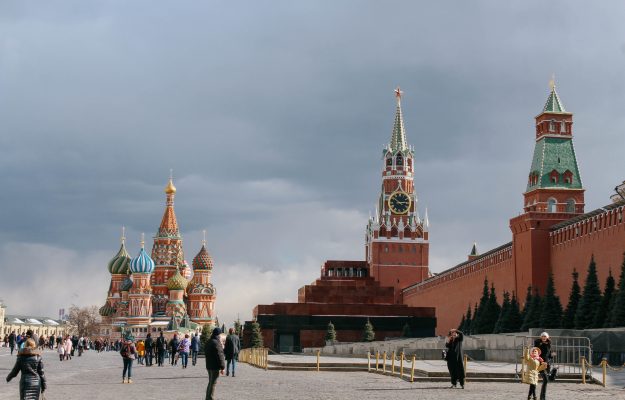The first casualty of war is the truth. This quote by Aeschylus, the father of the Greek tragedy, has been used, and abused, by almost everyone who has told the story of the Russian invasion of Ukraine. Since February 24, 2022, the invasion has plunged the Western world into the worst geopolitical, economic and societal crisis since the Second World War. The quotation as cited is true, since what comes from Russia in official form is almost exclusively propaganda. And, the Moscow government, inside and outside its National borders, has spared no resources to build a reassuring narrative of an economically healthy and militarily strong Country. The fact that the price of gas — which supports a large portion of the Russian economy — is falling, is of no great matter, because in the end, the autarchy and tenacity of the post-Soviet people will prevail.
It is rather difficult to imagine such a scenario, especially in the long term. But, it is worth trying at least to reconstruct, as much as possible, the momentum of the wine sector in Russia, starting from the earth. For many years, Moscow has nurtured the ambition of becoming a major wine producer. In 2017, when domestic production barely touched 370 million liters, Aleksandr Tkacev, then Minister of Agriculture of the Russian Federation, had relaunched the project (that had started a few years earlier) to considerably expand the Russian vineyard — up to 140.000 hectares in 2020. The goal was reconfirmed in 2018 at the Congress of Russian winemakers (All-Russian Winemakers Summit), and there it became to double production, expanding the vineyard areas up to 169.300 hectares, to guarantee production of 1.3 million tons of wine grapes, against the 665.000 of the 2017 harvest.
Data on Russian and Chinese wine was exactly what was missing from the OIV's 2022 global production numbers. Therefore, we can only rely on what the Russian news agency TASS has told in recent days, to make an estimate. The news agency spoke about viticulture in the most important territory in the country, the Krasnodar Region, which today counts 29.600 hectares of vineyards, and where production grew + 17.1% in 2022, to reach 333.700 tons of grapes harvested, and 2.13 million hectoliters of wine produced, equal to 42% of the entire National production. It is then easy to calculate that Russia’s production potential in 2022 should amount to 5 million hectoliters, or 13.6% more than in 2021.
Another interesting aspect concerns the production of sparkling wines, which grew + 25.38% in 2022, reaching 1.41 million hectoliters, of which 620.000 hectoliters were produced in the Krasnodar Region and 170.000 hectoliters in the Republic of Dagestan. According to a note from the Moscow Ministry of Agriculture, the merit is due to an excellent harvest, certified not only by production data, but also by quality findings, reported in the “Wine Guide of Russia”, that the quality monitoring system of Russian products (Roskoshestvo), and the Ministries of Agriculture and Industry issued, according to which more than half of Russian sparkling wines deserve a score higher than 81/100.
Of course, this adjudication is highly questionable, though, it is useful to redefine the greatness of Russian bubbles, especially after the end of the truce between Moscow and Paris on Champagne. Even though imports reached a record 2.3 million bottles in 2021 (data from Union des Maisons de Champagne), the law that prevents Champagne from using the term “Champanskoïe” came back into force on January 1,2022 - in Cyrillic - on the back label of bottles exported to the Russian market, “reserved” only for sparkling wines produced in the country.
It would be interesting to measure the effects of the conflict on the real consumption of Champagne, because it would help us understand how much it impacts the bourgeoisie and the oligarchy in Moscow and also, how much it impacts the people. In this context, data on exports of Asti Spumante to Russia in the first six months of 2022 triggered quite a bit of surprise, as they registered + 33% growth compared to the same period in 2021, and as many as 4.18 million bottles. This is not an isolated case for Italian wine. According to the most recent ISTAT data, in the first nine months of 2022, on the whole, shipments to Moscow began to grow again, reaching 93.35 million euros, just 2.65% less than the same period in 2021. In September, the value of Italian wine flown to Russia was 22.4 million euros, compared to 16.7 million euros in September 2021.
Is the Russian economy really as healthy as Moscow says? It is probably not likely, it would appear that more than an increase in rushing to purchase and therefore to import — as it also regards wine from nearby Georgia, Russia’s historical supplier, from which, in the first 11 months of 2022, it imported 670,000 hectoliters of wine, for 150 million US dollars — it was the news, expected, of the increase in excise duties on alcoholic beverages, effective from the beginning of 2023. The increase was equal to 4% more for beverages below 9 percent alcohol (at 613 rubles per liter of ethyl alcohol) and for those above 9 percent alcohol (at 490 rubles per liter of ethyl alcohol), except for beer, and wine, which increased instead + 3%, at 34 rubles per liter (45 euro cents).
Copyright © 2000/2025
Contatti: info@winenews.it
Seguici anche su Twitter: @WineNewsIt
Seguici anche su Facebook: @winenewsit
Questo articolo è tratto dall'archivio di WineNews - Tutti i diritti riservati - Copyright © 2000/2025









































































































































































































